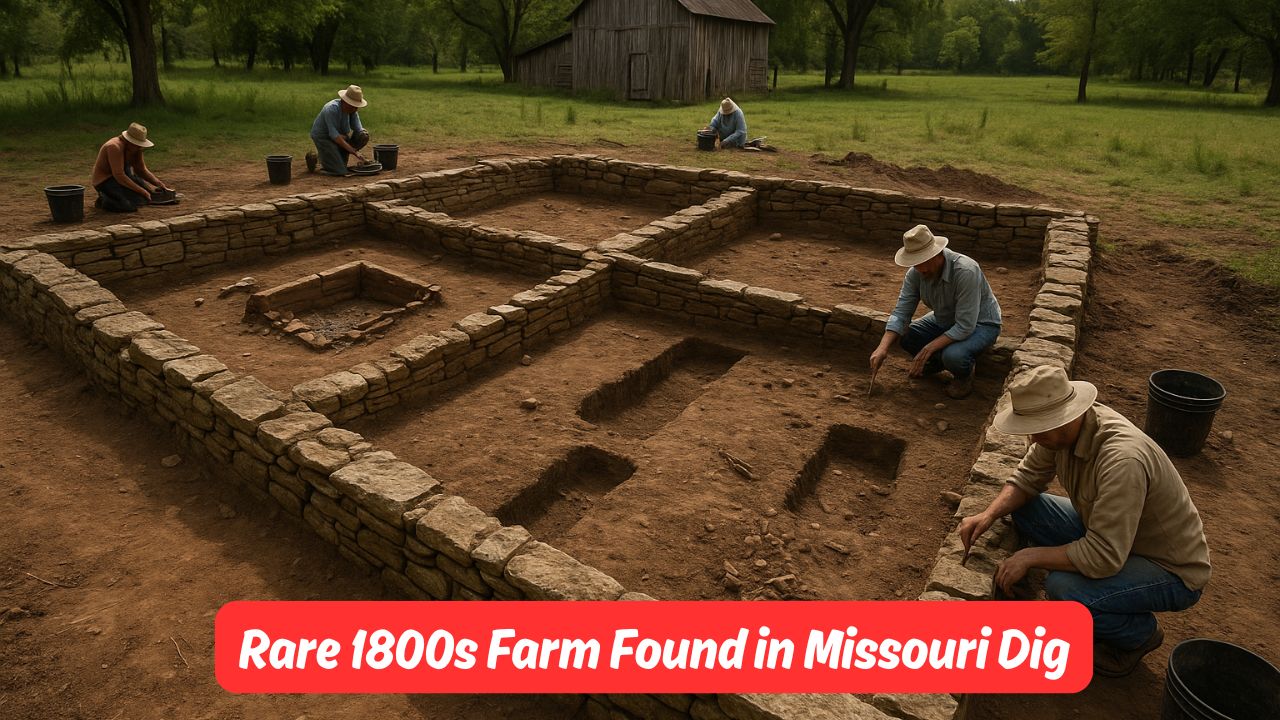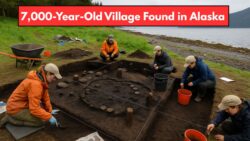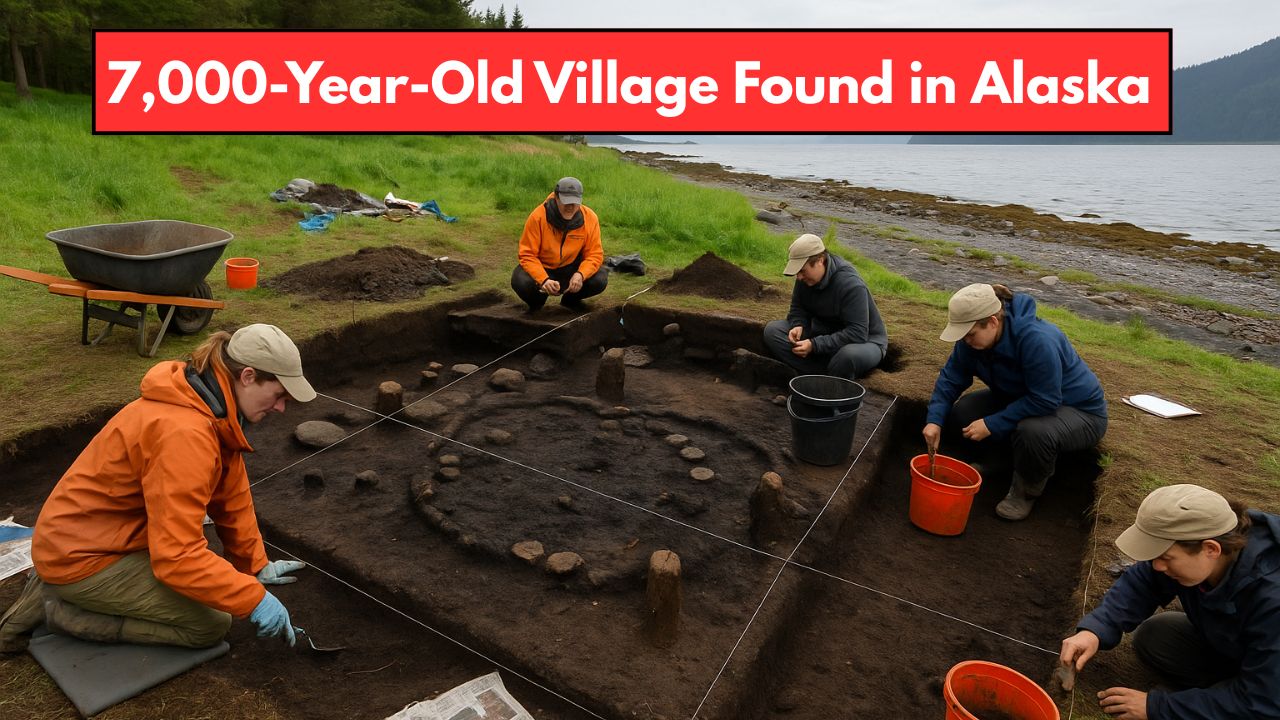Historic Missouri Homestead – In a stunning archaeological breakthrough, a team of researchers has unearthed a forgotten homestead in rural Missouri, revealing remarkably preserved remains of a 19th-century colonial-era farm. The discovery has sparked national attention, offering a rare and intimate glimpse into early American pioneer life. The site, located near the outskirts of St. Charles County, was stumbled upon during a pre-construction survey for a proposed residential development. What began as a routine excavation quickly turned into a historical treasure hunt. Researchers found foundations, tools, household items, and even personal artifacts that date back to the 1830s. The Missouri State Historical Society has already begun cataloging the findings, and preliminary reports suggest the farmstead belonged to a German immigrant family that settled in the region during the wave of westward expansion.
Rediscovering a Lost Chapter of Missouri’s Pioneer History
This newly uncovered homestead is believed to be one of the earliest European farming settlements in the region. The structures and objects recovered so far paint a vivid picture of daily life in the American Midwest during the early 1800s.
- Located in a fertile valley that was once part of the Boone’s Lick Trail
- Dates back to 1831, based on ceramic and nail typology
- Built by a second-generation German-American family
- Previously undocumented in local township records
The archaeologists emphasize that such well-preserved sites are extremely rare due to development, farming, and natural decay.
What the Excavation Team Discovered
Just below the topsoil, a trove of colonial-era artifacts began to emerge. The excavation revealed outlines of what appeared to be a central farmhouse, a storage cellar, and two outbuildings.
 7,000-Year-Old Alutiiq Village Discovered in Alaska—Ancient Stone Tools Wash Ashore After Erosion!
7,000-Year-Old Alutiiq Village Discovered in Alaska—Ancient Stone Tools Wash Ashore After Erosion!
Key items recovered include:
- Hand-forged iron tools, including axes, hoes, and hinges
- Ceramic kitchenware featuring traditional Bavarian patterns
- Animal bones and food remnants in refuse pits
- Buttons, thimbles, and a hand-carved wooden comb
- Remnants of a cast-iron stove and oil lamps
- Children’s marbles made of clay and glass
- Stone-lined well still partially intact
These items are being carefully preserved and analyzed to understand their specific origins and usage.
Evidence of Hardship and Resilience
Historical soil samples from the site showed signs of repeated drought and crop failure—common struggles for settlers in the area. Yet the presence of imported goods and finely crafted home items indicates that the family once achieved moderate prosperity.
Clues suggesting pioneer lifestyle challenges:
| Indicator | Description |
|---|---|
| Charred wood layers | Possible signs of a past fire or raid |
| Broken plow blade | Suggests mechanical failure during farming |
| Bullet casings | Indicate hunting or conflict with wildlife |
| Empty ink bottles | Points to education or record-keeping efforts |
| Infant shoe soles | Evidence of family presence and infant care |
Despite these signs of adversity, the layout of the home suggests careful planning, community interaction, and strong roots in agricultural tradition.
Family Ties: Who Lived Here?
Initial research links the property to the Schreiber family, German immigrants who arrived in Missouri in 1827. Census records from 1840 list a “Hans Schreiber” with six children and his wife Anna residing near this same area.
Family structure based on evidence and records:
| Name | Role | Age (Estimated) | Artifact Link |
|---|---|---|---|
| Hans Schreiber | Father | 45 | Rifle parts, boots |
| Anna Schreiber | Mother | 42 | Hairpins, cookware |
| Friedrich | Eldest Son | 18 | Axe handle |
| Greta | Daughter | 16 | Beads, sewing tools |
| Lukas | Youngest Son | 8 | Wooden toy wagon |
The discovery has stirred emotional reactions from some local residents, with several claiming distant ancestry to the Schreibers.
Why This Discovery Matters
This homestead offers a rare glimpse into the personal and cultural life of early German-American settlers, a demographic often overlooked in U.S. pioneer narratives. The site may eventually become part of a heritage preservation program or even a museum exhibit.
Historical significance of the homestead:
- Adds depth to Missouri’s colonial and migration history
- Provides physical evidence of westward expansion
- Highlights German-American cultural integration
- Offers teaching tools for schools and universities
- May be eligible for National Register of Historic Places
Researchers hope this find encourages more careful historical surveying before new developments break ground.
What’s Next for the Site?
The Missouri Department of Natural Resources is collaborating with local universities to conduct further analysis and possibly reconstruct parts of the homestead for public viewing. There’s also growing public interest in protecting the land from further development.
Planned next steps:
- Carbon dating wooden fragments to confirm age
- Digital mapping and 3D modeling of site layout
- Public exhibition of artifacts in Jefferson City
- Oral history collection from locals
- Community vote on site preservation funding
The discovery not only bridges the past and present but also invites local communities to participate in safeguarding their heritage.






